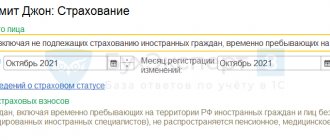Let's figure out what SMEs are, how to determine whether they belong to the categories of medium and small businesses, who belongs to them, and what organizations they are. This type of business in our country enjoys great benefits. It is no coincidence that the state apparatus makes such concessions, because they can significantly increase employment and at the same time reduce the administrative burden.
This term refers to any commercial enterprise or individual whose activities are aimed at generating income. This also includes landowners, as well as industrial cooperatives and other communities. However, it would be a mistake to classify ordinary non-profit or government associations, as well as municipal facilities, as such.
Signs of small business in 2022: table
| SME category | Annual income (million rubles) | Average number of people |
| Medium organization | 2000 | 250 |
| Small | 800 | 100 |
| Microorganization | 120 | 15 |
There are several basic groups that must be taken into account:
- The amount of total receipts in general that were credited for the past calendar year.
- The objective share of ownership of the assets of another company in the authorized capital.
- The number of our fellow citizens and foreigners who were brought to work during the same period.
Judging from the point of view of employment, as well as the coverage of maximum cash flows, all organizations or individual entrepreneurs can be characterized by a number of indicators, which we have already given in the table above. Thus, not every economic unit can be classified as one of these types, regardless of whether the person is a legal entity or an individual. The characteristic features are the following:
- partnerships;
- partnerships;
- companies (including LLC and JSC).
In addition, you can also check some other criteria in relation to other structural formations of a specific nature:
- Farms and peasant households.
- Consumer cooperatives.
- Industrial associations.
This also includes individuals who have their own business, whether it is unprofitable or profitable.
Statutory audit: 2022 criteria for small businesses
Should small businesses undergo mandatory audits? According to Law No. 307-FZ of December 30, 2008, the following are subject to mandatory audit (Article 5 of Law No. 307-FZ):
- all joint stock companies,
- an organization whose revenue excluding VAT for the previous reporting year exceeded 400 million rubles, or whose balance sheet assets as of December 31 of the previous year exceeded 60 million rubles.
Small enterprises that meet the criteria listed above in 2022 are required to undergo an audit.
Ready-made solutions for all areas
Stores
Mobility, accuracy and speed of counting goods on the sales floor and in the warehouse will allow you not to lose days of sales during inventory and when receiving goods.
To learn more
Warehouses
Speed up your warehouse employees' work with mobile automation. Eliminate errors in receiving, shipping, inventory and movement of goods forever.
To learn more
Marking
Mandatory labeling of goods is an opportunity for each organization to 100% exclude the acceptance of counterfeit goods into its warehouse and track the supply chain from the manufacturer.
To learn more
E-commerce
Speed, accuracy of acceptance and shipment of goods in the warehouse is the cornerstone in the E-commerce business. Start using modern, more efficient mobile tools.
To learn more
Institutions
Increase the accuracy of accounting for the organization’s property, the level of control over the safety and movement of each item. Mobile accounting will reduce the likelihood of theft and natural losses.
To learn more
Production
Increase the efficiency of your manufacturing enterprise by introducing mobile automation for inventory accounting.
To learn more
RFID
The first ready-made solution in Russia for tracking goods using RFID tags at each stage of the supply chain.
To learn more
EGAIS
Eliminate errors in comparing and reading excise duty stamps for alcoholic beverages using mobile accounting tools.
To learn more
Certification for partners
Obtaining certified Cleverence partner status will allow your company to reach a new level of problem solving at your clients’ enterprises.
To learn more
Inventory
Use modern mobile tools to carry out product inventory. Increase the speed and accuracy of your business process.
To learn more
Mobile automation
Use modern mobile tools to account for goods and fixed assets in your enterprise. Completely abandon accounting “on paper”.
Learn more Show all automation solutions
Income characteristics
All digital indicators can be examined in more detail in the table above; there is no point in repeating them again. You need to understand that all income for the past year is taken into account. In this case, VAT is not taken into account, and the shaft is calculated in total, regardless of how many types of activities are performed.
For ease of understanding, a practical example can be given. Horizont LLC has three main areas in which it earned 500 million each during the calendar reporting period. Consequently, in total, one and a half billion rubles are taken into account, and the enterprise itself belongs to the middle cell. At the same time, individual entrepreneur Savelyev conducts only two types of activities, and received only five million in one way, and ten in another. In this case, it should be classified as a microenterprise.
proposes to significantly increase the efficiency of various organizations by introducing mobile automation into the accounting system.
By staff size
In addition to the income described above, the number of employed workers must also be taken into account. Moreover, we can only talk about those with whom employment contracts have been concluded. In this case, there is no need for information about whether people were physically present at their workplaces: whether a person is on sick leave or on vacation, he should still be counted.
| Category | Maximum number of employees | A comment |
| Microenterprise | 15 | |
| Small | 16—100 | |
| Average | 101—250 | |
| 251—1000 | For business entities that comply with the conditions of Resolution number 1412, included in the list of the Ministry of Optical and Trade, as well as those operating in the field of light industry. | |
| 1500 | For catering organizations whose main activity is class 56. |
Additional indicators and attribution parameters are also implied, which are also usually taken into account. Usually they are designed specifically to support JSCs and LLCs, and most importantly, they relate to the total share of participation of other companies in the authorized capital. The following range of values can be distinguished:
- Foreign entities and legal entities - no more than 49%.
- Russian Federation, NGOs and regional entities - no more than 25%.
In order not to lose this beneficial status, all organizations must annually record such indicators. Otherwise, it may be removed during the next inspection.
| Blogs
The well-known job search portal hh.ru conducted a survey among the employed population. It turned out that 84% of people dream of opening their own business in the future. Only 8% of respondents are satisfied with paid work. And these numbers are quite real, because everywhere you look, everyone wants to work for themselves.
It is more logical to start a business with a small or medium-sized form of entrepreneurship. But who belongs to small and medium-sized businesses? Who is easier to get government support and how much taxes do you need to pay? Everything is in our article with statistics.
What is a small business (what kind of business is considered small)
These are organizations and individual entrepreneurs that meet certain parameters:
- The number of employees is less than 100. If there are more people subordinate, then this is already a characteristic of a medium-sized business. Doesn't stick.
- Annual turnover is less than 800 million rubles. They earn less than 120 million rubles. – micro-enterprises, more than 800 million rubles. – average.
Small businesses are subject to fewer inspections (no more than 50 hours per year). And in principle, the state is more loyal to small businesses. Gives subsidies, grants, does not bother you with numerous reports.
Who is a small business?
Federal Law of the Russian Federation No. 209 states that small businesses include peasant farms, individual entrepreneurs, business partnerships, cooperatives and some other organizations that fall under the criteria (described above).
Every city has its own small business heroes. In Zelenodolsk there is a lingerie store “Eva”, in Cheboksary there is an advertising company “Graphics”, in the village of Vasilyevo there is a GOST construction store. Small businesses usually include hairdressers, agencies, small little-known stores, and online media.
What is a medium business - a simple definition
A medium-sized business is larger in terms of the number of employees (no less than 101 and no more than 250 people) and capital turnover (no less than 801 million rubles and no more than 2 billion rubles).
When they hired 101 employees and entered a medium-sized business
A representative of this form of entrepreneurship is known in the region and may even have a representative office throughout the country. If small enterprises are cozy places near the house in a single or almost single copy, then medium-sized ones have a wider geography.
How much money does an average business cost?
Capital turnover per year must be more than 800 million rubles, but less than 2 billion rubles.
Examples of successful medium-sized businesses are the companies “Olips”, “Solomon”, “Geotech”, etc.
Large business - definition with famous examples
Big businesses are giants of entrepreneurship. Such firms operate not only within the region, but throughout the country and the world. They have several common features:
- Number of employees: from 251 people;
- Annual turnover more than 2 billion rubles;
- Work over a large territory and in different countries;
- Large share of production in its niche.
When these numbers are reached, a medium-sized business becomes a large one. If it was not possible to find examples right away with small and medium-sized businesses, then with large ones there was no need to think about it. The companies that belong to this cluster are well known to everyone: Akkond, Atyashevo, Zvenigovsky, Pobeda, Petrovsky Bread Factory, Pyaterochka, Samsung, Apple, Redmond, Ikea, etc.
How to define a small, medium or large business
We’ve gone through each type of business, now you need to summarize and make a cheat sheet, using which you can easily determine in a second which company is a small, medium or large business. So who is included in small, medium and large businesses?
| Criterion | Small | Average | Large |
| Number of employees | from 15 to 100 people | from 101 to 250 people | from 251 people |
| Income per year | up to 800 million rubles | up to 2 billion rubles | from 2 billion rubles |
| Getting a loan | Not easy for any amount | Not easy for a large amount | No problem |
| Geography | One company in the city | Network in the city and region | Network throughout the country and abroad |
How much do small, medium and large businesses pay in taxes?
1. Simplified taxation system and PSN - what are the taxes for small businesses?
Simplified language and patent are suitable for small businesses. You can hire no more than 15 employees under a patent, and a maximum of 130 under the simplified tax system. Moreover, under the latter regime you cannot earn more than 200 million rubles per year.
There are several types of simplified taxation system – simplified taxation system “Income” (rate from 1 to 6%) and simplified taxation system “income minus expenses” (from 5 to 15%). Rates are determined based on the region in which you live. The simplified tax system is most often chosen by entrepreneurs. It is convenient to pay, report and even save.
A patent implies income of up to 60 million rubles. And only individual entrepreneurs can use the system. But it is convenient and simple, you only need to submit reports for employees (up to 15 people), the rest is not required. By the way, PSN is somewhat similar to UTII, which was canceled in 2021 (the payment amount depends not on known income, but on potential income).
2. BASIC for everyone
The general taxation system automatically applies to any business if the entrepreneur did not choose a tax regime during registration. Keeping records on it is very difficult, and without an accountant it is almost impossible.
When I chose OSNO and didn’t hire an accountant
Individual entrepreneurs and LLCs in small businesses do not choose OSNO. This is the lot of medium and large businesses. There are several types of taxes in the general system:
- Income tax (20% paid by organizations);
- Personal income tax for individual entrepreneurs (13%, 15%, 30%);
- VAT for everyone (0%, 10%, 20%);
- Property tax for organizations (less than 2.2%);
- Property tax for individual entrepreneurs (from 0.1% to 2%).
Among other things, individual entrepreneurs are required to pay insurance premiums for themselves. And this is 40,874 rubles per year.
How the state supports small and medium-sized businesses
Subsidy for starting a business
Who will receive subsidies for small and medium-sized businesses? If you are an unemployed adult citizen registered with the employment center of your city (or just planning to do so), then the information will be useful to you. The Ministry of Economic Development has developed a special program for subsidizing small and medium-sized businesses.
They give you a subsidy to start your own business, and only once. Each region has its own sizes. For example, in Moscow they can give a little more than 10,000 rubles, and in Krasnodar - almost 20 times more. It is better to look for detailed information on the “My Business” website.
Business development grant
A grant is usually expressed in the form of government participation in a business or gratuitous financial assistance. The amounts of each grant are different. The field of activity, number of employees, business income, etc. play a role here.
This subsidy is given only to starting small businesses that have been operating for less than a year. To get it, you need:
- have an ideal reputation and credit history;
- produce products or provide services in an area that is significant for the state and society;
- invest a quarter of your money;
- pay contributions to the Pension Fund and the Compulsory Medical Insurance Fund.
Subsidy for production modernization
This subsidy applies to those who have already organized their own production and need to change technical equipment. The state will reimburse such productions for up to half of the costs (up to 5 million rubles).
Provided that you meet the following criteria:
- not bankrupt;
- no debts;
- regularly pay salaries to your subordinates;
- the average salary in the company is above the minimum threshold in the region;
- are ready to pay the full amount for the installed equipment;
- did not participate in similar state programs in 2022.
Subsidy for starting a farm
Farmers in the agro-industrial sector can apply for support. They have the right to get back up to 90% of the money they spent (this is up to 3 million for organizing a family farm and raising cattle and up to 1.5 million in other cases).
The subsidy is tempting, but they give it if:
- the owner has not been involved in any other business in the last 3 years;
- the farm has existed for less than 2 years;
- the businessman has an education related to agriculture and more than 3 years of work experience in the field;
- the entrepreneur has not received such assistance before;
- There are no more than 15 employees on the farm;
- the owner is ready to contribute 10% of the amount from his own pocket, etc.
But despite the fact that the state offers a number of programs, the vast majority of existing entrepreneurs believe that these support measures do not help them.
Results of the survey of the portal hh.ru
Results of the survey of the portal hh.ru
Why should the state support small and medium-sized businesses?
It would seem, how does the state affect our business? But it, like no one else, is interested in this. There are several good reasons:
- Small businesses are highly dependent on the economy in the country. He maintains its sustainability, which is beneficial to the state.
- By creating several firms in one niche, the likelihood of creating a monopoly is reduced. Monopoly slows down economic development. On the contrary, competition helps produce goods of higher quality and gives customers an alternative.
- Small and medium-sized businesses provide jobs. It is beneficial for the state to employ its population so that they pay taxes on their salaries, and not siphon unemployment benefits from the treasury.
How to get money for a small business
Now we know for sure that the state needs small businesses. As of 2022, more than 15 million people are employed in the SME sector. And this number should constantly grow. For these purposes, the state has developed several support programs, under which you can receive a subsidy, grant, preferential loan and various compensations. You can read about this in detail here.
To get help, go to the authority that provides a grant or subsidy. These are the Employment Center, the Ministry of Economic Development, the Ministry of Agriculture, a branch of the Department of Agriculture, etc.
Small and medium-sized businesses: statistics for Russia
In July 2022, there were 6.1 million SMEs in the country. A month later, the number dropped to 5.6 million. In 2022, there will be a census of small and medium-sized businesses, and the data, of course, will change.
Data on the number of SMEs from Rosstat
Data on the structure of SMEs from Rosstat
hh.ru employees also asked businessmen why they chose entrepreneurship. And as can be seen from the results, people are least interested in status.
hh.ru survey results
How is entrepreneurship different from employment?
When you are tired of working for your “uncle,” the tempting prospect of working for yourself appears. More precisely, the prospect was always there, but it was somewhere in the distance. As thoughts about entrepreneurship arise, doubts also arise.
- The good thing about owning your own business is that you can control your own time. In hiring, you have a clear schedule, deviation is a reprimand.
- You also set your own salary based on your income. When working for someone else, you have a salary and a bonus.
- Well, independence - they decided that it was time to go on vacation, delegated tasks to the manager or director and moved on. In hiring, vacation is planned - 2 times a year for 2 weeks or a month once a year.
Pros and cons of working for yourself
| + | — |
| Income has no limits | All business problems are your concern and responsibility |
| You make all the decisions | You can lose everything overnight and still be left with debts |
| The work schedule is also set by you | At first, your loved ones will not see you at home |
| You can experiment - find new areas of activity, open partnerships, etc. | You are not protected by the state in any way, guaranteed sick leave, vacations, social package - there is nothing |
| The high status of an entrepreneur appears | Business will haunt you even at home, because the schedule is irregular and there are always a lot of tasks |
| You can provide money and business for loved ones and children | You need to constantly negotiate, be able to negotiate, be courageous and decisive (which is not suitable for everyone) |
| Own business warms the soul and motivates | |
| There are prospects to write your name in history |
State register and categories of SMEs: main criteria
A unified list of small and medium-sized businesses has existed since mid-2016, when the relevant legislative acts were adopted. Anyone can view it easily on the portal of the Federal Tax Service (FTS). It includes all representatives of such businesses registered on the territory of the Russian Federation.
All positions are entered into it automatically after they are registered in the Unified State Register of Individual Entrepreneurs, the Unified State Register of Legal Entities, and also upon submission of reports to the tax authorities. Information that is usually freely available:
- Data on activity codes according to OKVED.
- The full name of any individual entrepreneur or the name of a legal entity.
- Taxpayer INN.
- Place of residence or location.
- Availability of a license if the subcategory of employment is licensed.
However, these are only mandatory items. At the request of the person or organization, other information may also be entered into the register:
- Complete contact information so you can easily contact management.
- Description of manufactured goods (products), in accordance with the criteria of innovative and/or high-tech indicators.
- Government procurement contracts.
- Partnerships with government customers.
Information is added only after going through the authorization process on a special service for transmission, for which you must have a qualified enhanced electronic signature.
Small Business Criteria 2022
Small businesses include individual entrepreneurs carrying out business activities without forming a legal entity, consumer cooperatives, joint-stock companies, limited liability companies and farms. Depending on the number of employees, small businesses are divided into: microenterprises, small and medium-sized enterprises.
Small business has a number of advantages:
- it can be registered independently, remotely and in a simplified form;
- start a business using a ready-made scheme for a large network or develop a large network yourself with the help of franchisees;
- the strategy for the development of small and medium-sized businesses in the Russian Federation provides for support programs developed until 2030;
- the ability to use simplified document flow;
- the ability to use electronic document management;
- exemption from certain types of scheduled inspections until the end of 2021.
Principles of formation
Once included in such a register, an enterprise or individual no longer needs to confirm its own status. For example, in order to participate in state support programs, previously it was necessary to also provide an annual tax and accounting report, information on the number of employees, and financial results for the past twelve months. However, if the information was not submitted to other authorities, the subject may not be included in this list.
All information provided is usually updated every year on a specific date (August 10). However, it should be understood that all data will be taken into account as of July 1. Those who violate the deadlines at a later date will no longer be able to get on this list. What exactly will be checked and changed if necessary within the following time frame:
- General information.
- Information about new (newly created) individual entrepreneurs, as well as legal entities.
- Data on those who stopped working, in accordance with established standards, which are regulated by paragraphs 5 and 7 of part 5 of article 4.1 of the Federal Law, issued on July 24, 2007, number 209.
- List of manufactured or ordered products, goods, services provided, work performed, etc.
Reporting and other nuances for medium-sized enterprises
Medium-sized businesses need to prepare the same package of accounting documents as large enterprises. If the annual revenue volume is more than 400,000,000 rubles, the enterprise must annually audit its reporting. The auditor's report is a mandatory annex to the balance sheet and financial statements.
Mandatory reporting includes:
- Balance.
- Financial performance report.
- Applications.
Mandatory annexes include a report on changes in capital, transactions with funds, and the intended use of funds. The appendix also contains explanations for the documents.
Taxes
When it comes to taxation issues, medium-sized enterprises lose out to small ones. Only a limited number of medium-sized businesses can use the simplified tax system and the patent system for paying taxes. The latter is relevant only for individual entrepreneurs. The simplified tax system can only be applied to certain areas of activity. The positive thing is that there are no restrictions on annual income. Regional authorities have the right to introduce tax breaks for medium-sized enterprises and reduce rates. Payments under UTII are significantly less than under the general system (OSN). UTII is the main tax system for medium-sized businesses.
Criteria for inclusion in the lists
Everything described above allows us to draw direct conclusions about what guidelines and indicators must be met in order to be included in this list, which provides special advantages. Let's briefly outline them to make it easier to understand exactly how this scheme works.
- Average number of employees.
- Participation of other enterprises in the authorized capital.
- Income limits for the past calendar year.
- Intellectual or innovative activity.
When a small enterprise turns into a medium or large one
There are certain circumstances, the occurrence of which will lead to the organization losing its status as a small enterprise. Naturally, this is due to the fact that it will not fall under the criteria of small enterprises in 2020-2021. These conditions include the following:
- If circumstances are associated with an increase in the percentage of participation in the authorized capital above the limit value, then the enterprise will lose its small business status. In this case, the moment of transition to a medium or large enterprise is considered to be the date of making an entry in the Unified State Register of Legal Entities about the change in the authorized capital of the organization.
- If circumstances are associated with an increase in the average number of personnel or income from all types of entrepreneurial activities above the legal limit, the status of a small enterprise is retained by the enterprise for three years. After the expiration of the mentioned period, the small enterprise will lose this status and become medium or large, depending on the value of these criteria, as indicated in paragraph 4 of Art. 4 of Law 209-FZ.
How to get on the register yourself
First, you should thoroughly understand whether an individual entrepreneur or LLC is a small business entity, whether its characteristics are significant and suitable, and only after that start any activity. Checking the status of your own account, as well as making adjustments to it, is not at all difficult.
Any potential partner will be able to qualitatively and easily check all the necessary information on the Federal Tax Service website. It is enough to simply send a request by name or TIN number. If the information is out of date or inaccurate, you should send a request for verification to the portal operator.
The essence of small business
Small business as an economic phenomenon has a number of features that are characteristic of entrepreneurship in general, as well as a specific set of properties that allow us to consider it as an independent object of research.
The following areas of small business study are distinguished:
- As a specific socio-economic phenomenon,
- As an object of statistical accounting,
- As an object of government influence, which may be of a regulatory or fiscal nature.
Note 1
In the second and third cases, the criteria for determining the structure of a small business from the entire system of economic structures will be, first of all, clear quantitative criteria. When considering small business as a socio-economic phenomenon, qualitative aspects come to the fore.
Are you an expert in this subject area? We invite you to become the author of the Directory Working Conditions
Ready-made solutions for all areas
Stores
Mobility, accuracy and speed of counting goods on the sales floor and in the warehouse will allow you not to lose days of sales during inventory and when receiving goods.
To learn more
Warehouses
Speed up your warehouse employees' work with mobile automation. Eliminate errors in receiving, shipping, inventory and movement of goods forever.
To learn more
Marking
Mandatory labeling of goods is an opportunity for each organization to 100% exclude the acceptance of counterfeit goods into its warehouse and track the supply chain from the manufacturer.
To learn more
E-commerce
Speed, accuracy of acceptance and shipment of goods in the warehouse is the cornerstone in the E-commerce business. Start using modern, more efficient mobile tools.
To learn more
Institutions
Increase the accuracy of accounting for the organization’s property, the level of control over the safety and movement of each item. Mobile accounting will reduce the likelihood of theft and natural losses.
To learn more
Production
Increase the efficiency of your manufacturing enterprise by introducing mobile automation for inventory accounting.
To learn more
RFID
The first ready-made solution in Russia for tracking goods using RFID tags at each stage of the supply chain.
To learn more
EGAIS
Eliminate errors in comparing and reading excise duty stamps for alcoholic beverages using mobile accounting tools.
To learn more
Certification for partners
Obtaining certified Cleverence partner status will allow your company to reach a new level of problem solving at your clients’ enterprises.
To learn more
Inventory
Use modern mobile tools to carry out product inventory. Increase the speed and accuracy of your business process.
To learn more
Mobile automation
Use modern mobile tools to account for goods and fixed assets in your enterprise. Completely abandon accounting “on paper”.
Learn more Show all automation solutions
Benefits for small businesses
Representatives of these can take advantage of numerous relaxations in various areas of doing business.
Tax
The most significant advantage is precisely this category, because the amount of payments that each entrepreneur is obliged to contribute to the budget can be significantly reduced. In our country there are even several separate taxation systems that can be applied exclusively by such objects:
- PSN for individual entrepreneurs who have no more than 15 employees, and the annual income limit on a patent is no more than 60 million rubles.
- simplified tax system, with maximum revenue up to 150 million, and number of employees up to hundreds.
- NAP, a special pilot regime for the self-employed, which is already in effect in 23 regions of the Russian Federation. This means no more than 2.4 million rubles per 12 months, as well as a ban on hiring third-party workers.
- Unified agricultural tax, in which there is no maximum profitability, but the share of income from the sale of agricultural products is not less than 70% of the total amount. You can hire no more than three hundred people here.
Labor Relations
When the number of hired labor in the enterprise does not exceed thirty-five people, the owners have every right to sign them up under fixed-term contracts. For retail trade and various areas of consumer services, the limit is 20 jobs.
Accounting
This implies maximum simplification of all actions, since entities have the right to submit a simplified version of reporting. The list of necessary items to be submitted includes only two items:
- Current balance.
- Financial results.
All accounting is as simple as possible. For example, for all SMEs it becomes optional to create a special reserve, which will then be used to pay vacation pay, and also to make depreciation charges not monthly, but once a year is sufficient.
Administrative responsibility
In this case, scheduled inspections are completely excluded, as they are prohibited by law. At the same time, a special privilege is established for them. It obliges authorized controllers to change the fine to a warning.
Statistics
The obligation to submit reports is regulated by the law “On State Statistics”, published and entered into force on September 17, 1992 under number 2614-XII, and its norms must be fulfilled not only by the State Statistics Service employees themselves, but also by respondents. However, all SMEs have benefits in this regard and can work according to a simplified scheme.
State order
Various government agencies, according to the article of legislation numbered 44-FZ, must necessarily enter into agreements with small and medium-sized businesses. Moreover, the share of such should not be less than 15% of the total purchases.
Insurance
Business owners are subject to a mandatory insurance program for deposits and other assets, which is confirmed by Article No. 177-FZ. Therefore, if a banking institution loses its license or is completely liquidated, they will be reimbursed for all the funds that were placed there. However, the amount cannot exceed 1.4 million rubles in one financial institution.
Cash transactions
All types of entrepreneurship, including individual entrepreneurs, can carry out such actions in a significantly simplified form. For example, an individual may not keep receipts and expenditure books at all, not issue the corresponding orders, and they do not have to approve the cash balance limit.
Medium business: definition and characteristics
Such companies differ in their coverage area. They usually include an entire network that is capable of serving a large client audience. Strictly speaking, they don’t even have to conduct their work in the same city. Networkers can affect an entire region, but not enter the market of a neighboring region. Distinctive features can also be called:
- Slow adaptation to changing market conditions.
- Focus on improving the quality of goods or service to consumers.
- The staff ranges from 101 to 250 people simultaneously servicing the enterprise.
- Annual turnover is no less than 801 million rubles and no more than 2 billion.
As for areas of activity, this form of entrepreneurship is typical of network trading companies, construction companies, and large medical centers. In the global economy, it is medium-sized organizations that play the largest role, bringing the state approximately a third of all income. However, no tax breaks or other supporting measures are carried out in relation to them.
Features of the enterprise’s activities: let’s summarize
Unlike other countries, small businesses in Russia have their own characteristic features that must be taken into account in advance:
- Low legitimacy. A huge number of them are still in the “shadow” and use “gray schemes” in their work.
- Insignificant share of venture specialization. Innovation takes up only 6% of total production, the rest goes to commerce and trade.
- Significant instability arising from lack of finance and fierce competition.
- Low individual capital, which leads to poor business financing.
Thus, we figured out what it means to decipher terms related to objects and entities of small and medium-sized businesses (SMEs), and also got acquainted with the list of features of such.
They have to develop in rather difficult conditions, which is why the state apparatus has provided the benefits described above in order to make such a business much more competitive and attractive to many people. Number of impressions: 936
Who are SMEs?
The criteria for classification as small businesses in 2021 are established by the state. The main requirements, subject to which it is possible to classify a businessman as a small and medium-sized enterprise (SME), relate to the number of employees and the amount of income received.
Who is the SME, i.e. refers to small businesses, defined by law dated July 24, 2007 N 209-FZ in Article 4. We indicate these criteria in the table.
Free tax consultation
| Category of SME subject | Income for the year | Average number of employees |
| Microenterprise | 120 million rubles | no more than 15 people |
| Small business | 800 million rubles | no more than 100 people |
| Medium enterprise | 2 billion rubles | no more than 250 people |
For individual entrepreneurs, the same criteria for dividing into business categories apply: according to annual revenue and number of employees. If an individual entrepreneur does not have employees, then its SME category is determined only by the amount of revenue. And all entrepreneurs working only on the patent taxation system are classified as micro-enterprises.






